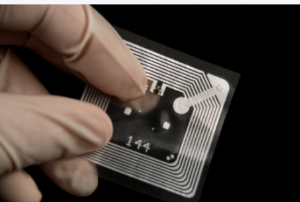RFID technology helps improve retail inventory accuracy to decrease shrinkage, stock loss and replenishment errors. In addition, it provides visibility into product movements throughout the supply chain and streamlines warehouse processes.
 RFID helps staff accurately check in and count entire shipments without needing blind receipts or individual package scanning. As a result, it reduces cycle count time while automating product reordering at safety stock levels.
RFID helps staff accurately check in and count entire shipments without needing blind receipts or individual package scanning. As a result, it reduces cycle count time while automating product reordering at safety stock levels.
Cost-effectiveness
RFID is becoming an increasingly popular way to manage inventory. As a result, many retailers are utilising the technology to boost accuracy levels, cut labour costs, and enhance customer service.
RFID offers many benefits, but implementation can be expensive. It requires hardware and software as well as licensing fees. Furthermore, integration with your current inventory management system may prove a significant undertaking for smaller stores.
RFID can also streamline warehouse operations, enabling retailers to restock shelves in a fraction of the time it would take with traditional manual inventory methods. It is especially beneficial for products stored at specific temperatures or susceptible to damage during transit.
Another advantage of RAMP_RFID RFID retail is that it helps reduce shrinkage by ensuring stock isn’t stolen or lost. According to a study of 10 European retail companies, RFID reduced shrinkage by more than 25% – saving the company millions in replacement expenses and inventory losses.
The solution to this problem is using RFID tags on each merchandise item. These tags transmit data to a reader near the object, sending it to software updating inventory databases with its new location.
RFID can monitor inventory across a retail space, from the front door to the backroom. It helps stores monitor what products are in stock and detect when customers want to purchase something unavailable. Furthermore, it can track buy-online, and pick-up-in-store orders, which could improve customer satisfaction and boost in-store sales.
Real-time inventory tracking
RAMP_RFID RFID retail systems offer accurate real-time inventory counts in warehouse and store settings, which is essential for retail organisations that strive to maintain the highest level of inventory accuracy. Doing so saves them time and money and increases operational efficiency.
With accurate real-time inventory counts, retailers can sell an item for pickup that isn’t in the store – leading to lost revenue and customer dissatisfaction. Furthermore, RFID enables buy-online, pick-up-in-store (BOPIS) capabilities which seamlessly link together online and in-store shopping experiences.
RFID not only offers inventory visibility but also improves efficiency and productivity. For example, an RFID reader can scan thousands of tags per second, eliminating employees needing to perform manual counts on the floor. It enables more detailed reporting on product demand and sales floor performance, leading to improved stock replenishment decisions and superior customer service.
Another beneficial application of RFID for retail inventory management is the capability to track pickup/try-on versus purchased items. It helps retailers gain insight into their shoppers and how to tailor future marketing campaigns accordingly.
Tracking retail activities is essential for preventing theft, replacing stolen items and avoiding stock-outs. Fixed RFID readers can autodetect and monitor movement within the store, even setting alarms if unauthorised items are left behind.
RFID can also help improve customer satisfaction by eliminating the need for return shipping. It allows retailers to build relationships with their customers and foster loyalty, leading to more purchases in the long run.
Accuracy
RFID for retail inventory provides one significant advantage, the accuracy of stock counts. It is because RFID works with tiny chips or tags with lots of data stored on them that attach to each inventory item and send that info via radio waves to an RFID reader.
Retailers can utilise this to quickly count items without using the line of sight. It is especially helpful, enabling them to cover large areas in a warehouse or store with just a small team and quickly complete the task.
On average, RFID inventory accuracy rates range from 65% to 95%; however, some cases have reached as high as 95% in certain instances due to their ability to be read from a distance and count items more precisely than traditional methods of inventory counting.
RFID technologies enable retailers to count items more precisely and rapidly, which is especially advantageous as the retail industry undergoes a digital transformation. By adopting new technology, retailers can boost their sales and become more competitive – an advantage for them and customers alike since they can provide a superior shopping experience.
Security
RFID is a dependable and secure inventory tracking solution that guarantees the exact location of all your products. It can prevent theft, ensuring you always have enough stock in your store.
Manual counting is unnecessary since employees no longer need to stay up late at night counting products – saving time and money. Furthermore, the technology can scan hundreds of items simultaneously, giving an accurate inventory count without human intervention.
Technology also simplifies tracking products that have been moved or stolen. For example, you can use data and video to pinpoint exactly when an item was moved so that security personnel can take action quickly. It saves hours spent searching through video footage, leading to quicker resolutions in shoplifting cases than they might otherwise.
